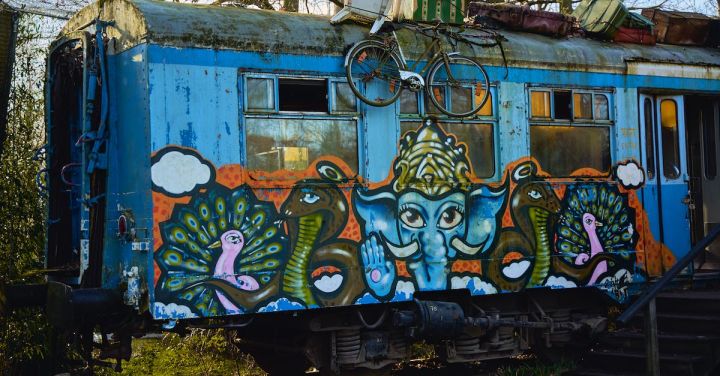Trains have long held a special place in the realm of art. From their humble beginnings as steam-powered locomotives to the sleek and modern high-speed trains of today, the evolution of trains has captured the imagination of artists throughout history. This article will take you on a journey through the art that has been inspired by the ever-changing world of trains.
In the early days of trains, when steam engines ruled the rails, artists sought to capture the power and majesty of these behemoths. Painters such as J.M.W. Turner and Claude Monet were drawn to the billowing smoke and the intense heat emanating from the locomotives. They used bold brushstrokes and vibrant colors to convey the energy and excitement of the steam era.
As trains became more advanced and electric-powered engines took over, artists shifted their focus to the sleek and streamlined designs of these new machines. The Art Deco movement of the 1920s and 1930s embraced the aesthetics of speed and technology, and trains became a popular subject for artists of the time. The iconic image of a speeding train, with its streamlined shape and gleaming surfaces, became a symbol of progress and modernity.
In the mid-20th century, as the world became more connected through rail travel, artists began to explore the social and cultural implications of trains. The works of Edward Hopper and Norman Rockwell depicted the hustle and bustle of train stations, capturing the diverse array of people and stories that converged in these transportation hubs. These paintings and illustrations celebrated the human connection that trains facilitated, highlighting the shared experiences of travelers from all walks of life.
In recent years, as high-speed trains have become the norm in many parts of the world, artists have once again found inspiration in the cutting-edge technology of the modern rail industry. Digital artists have used their skills to create dynamic and futuristic visions of trains traveling at incredible speeds, blurring the boundaries between reality and imagination. These artworks often incorporate bold colors and abstract shapes, reflecting the fast-paced and ever-changing nature of the modern world.
But art inspired by trains is not limited to paintings and digital renderings. Sculptors have also embraced the subject, using various materials to create intricate and detailed representations of trains. From large-scale installations in public spaces to delicate miniatures, these sculptures capture the essence of trains in three-dimensional form, allowing viewers to engage with the artwork from all angles.
In conclusion, the evolution of trains has been a source of inspiration for artists throughout history. From the awe-inspiring power of steam engines to the sleek and modern designs of high-speed trains, each era has brought forth a new wave of artistic expression. Whether it is through paintings, sculptures, or digital creations, artists have continuously found new ways to convey the beauty and significance of trains in our world. So the next time you find yourself gazing out at the passing landscape from a train window, take a moment to appreciate the art that these machines have inspired throughout the ages.
